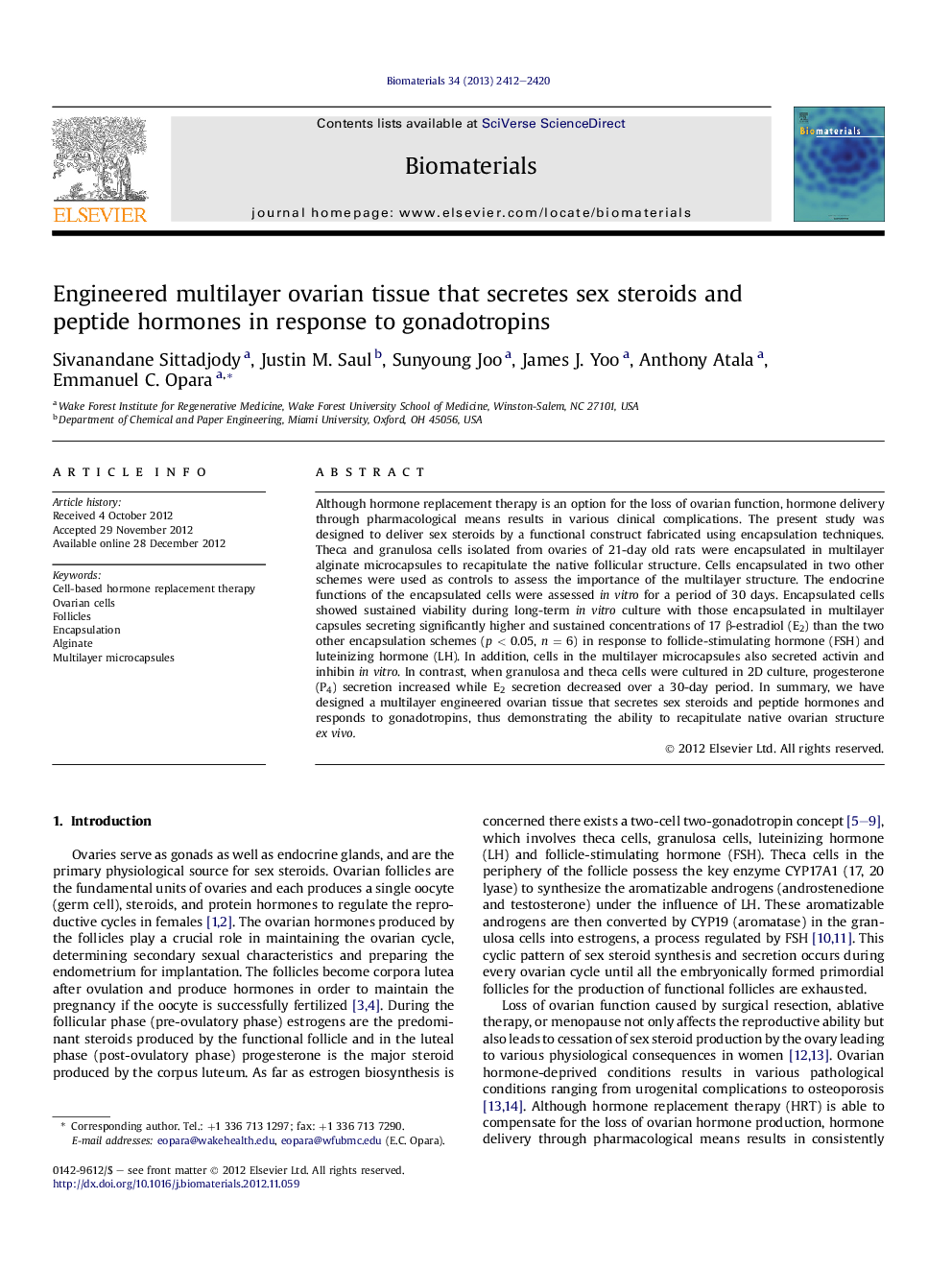| Article ID | Journal | Published Year | Pages | File Type |
|---|---|---|---|---|
| 10228421 | Biomaterials | 2013 | 9 Pages |
Abstract
Although hormone replacement therapy is an option for the loss of ovarian function, hormone delivery through pharmacological means results in various clinical complications. The present study was designed to deliver sex steroids by a functional construct fabricated using encapsulation techniques. Theca and granulosa cells isolated from ovaries of 21-day old rats were encapsulated in multilayer alginate microcapsules to recapitulate the native follicular structure. Cells encapsulated in two other schemes were used as controls to assess the importance of the multilayer structure. The endocrine functions of the encapsulated cells were assessed in vitro for a period of 30 days. Encapsulated cells showed sustained viability during long-term in vitro culture with those encapsulated in multilayer capsules secreting significantly higher and sustained concentrations of 17 β-estradiol (E2) than the two other encapsulation schemes (p < 0.05, n = 6) in response to follicle-stimulating hormone (FSH) and luteinizing hormone (LH). In addition, cells in the multilayer microcapsules also secreted activin and inhibin in vitro. In contrast, when granulosa and theca cells were cultured in 2D culture, progesterone (P4) secretion increased while E2 secretion decreased over a 30-day period. In summary, we have designed a multilayer engineered ovarian tissue that secretes sex steroids and peptide hormones and responds to gonadotropins, thus demonstrating the ability to recapitulate native ovarian structure ex vivo.
Related Topics
Physical Sciences and Engineering
Chemical Engineering
Bioengineering
Authors
Sivanandane Sittadjody, Justin M. Saul, Sunyoung Joo, James J. Yoo, Anthony Atala, Emmanuel C. Opara,
